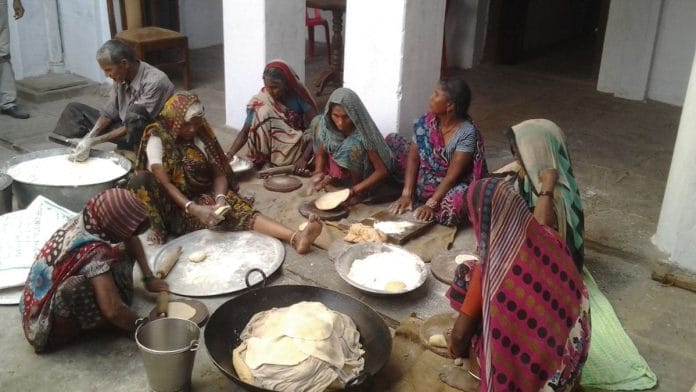New Delhi: About 44 percent of rural households spend the cash transfer received from the central and state governments on increased food consumption, according to an assessment of the consumption pattern of rural households mentioned in the Economic Survey 2024-25, tabled in Parliament Friday.
For the assessment, approximately 2,400 married women aged 25 to 45 in rural areas were surveyed to explore key aspects of women’s labour force participation, household decision-making, and the impact of welfare schemes.
The survey was conducted by Mumbai-based policy research and consulting organisation Artha Global’s Centre for Rapid Insights (CRI) in selected districts of Bihar, Jharkhand, Madhya Pradesh, and Uttar Pradesh in November 2024.
The survey assessed people’s access to various government schemes such as Jal Jeevan Mission, Pradhan Mantri Kisan Samman Nidhi, Ayushman Bharat, and Swachh Bharat Mission – Grameen, and how they use funds when the schemes are delivered in cash.
The survey indicates a high preference for cash schemes, as 77 percent of the surveyed households were receiving cash from either the central or state governments.
“The data suggests that economically disadvantaged households demonstrate a preference for cash schemes, likely attributable to the financial empowerment facilitated by the schemes,” according to the Economic Survey report.
The expenditure pattern of surveyed households indicates that a large percentage of the money is spent on increased food consumption.
“Overall, 44 percent of the surveyed households spend the money on increased food consumption, and another 31 percent spend primarily on non-food consumption (e.g., electricity, water), savings, or loan repayments, while 14 percent spend on house repairs,” the report said.
The survey assessed the consumption pattern of nearly 10 percent of better-off households in the sample. It was found that 52 percent of them primarily spent on food consumption, and less than 20 percent primarily spent the money on non-food consumption, savings, or loan repayments.
Of the nearly 2,400 women surveyed, nearly 37 percent were members of Self-Help Groups (SHGs). Among those in SHGs, 78 percent had received a loan.
An assessment of their loan utilisation pattern suggested that 34 percent of them used the loan amount for household consumption. There is significant usage for health expenditure (22 percent), starting businesses (19 percent), and agricultural expenditure (19 percent). Relatively low use for education (three percent) may point to the success of direct benefit transfers (DBTs) provided for education, according to the report.
“This highlights the consumption benefits of cash transfers and loans to targeted poorer and lower-income households. These households report using the funds for various basic needs and debt repayments. The exercise reinforces the case for replacing in-kind subsidies with direct and targeted cash transfers,” said the report.
Various government schemes have made a considerable difference in people’s lives. According to the survey, 59 percent of respondents reported that the primary benefit of government schemes was an “increase in the quality of life”. Another 19 percent reported that the primary benefit was more time for other economic activities.
“Evidence shows that government schemes have spurred consumption and income-generating activity in low-income households,” the report said.
Also Read: As growth slows & capex falls, Economic Survey suggests prioritising ‘efficient’ investment
Rural-urban household consumption narrowing
The results of the Household Consumption Expenditure Survey (HCES) 2023-24, which was conducted between August 2023 and July 2024, highlight the narrowing urban-rural gap in consumption expenditure.
According to the report, the average monthly per capita expenditure (MPCE) in rural and urban India in 2023-24 is estimated at Rs 4,122 and Rs 6,996, respectively.
The report said that social sector initiatives have reduced inequality and increased consumption spending.
“The urban-rural gap in MPCE has declined to 71 percent in 2022-23 from 84 percent in 2011-12. It has further come down to 70 percent in 2023-24, which confirms the sustained momentum of consumption growth in rural areas,” the report said.
(Edited by Radifah Kabir)
Also Read: BJP top guns call Sonia Gandhi ‘elitist, anti-poor’ for her ‘poor lady’ remark on President Murmu







Although a fiscal hawk, welcome these direct cash transfer schemes, including Ladki Behena in Maharashtra. They are putting food on the table for humble households.